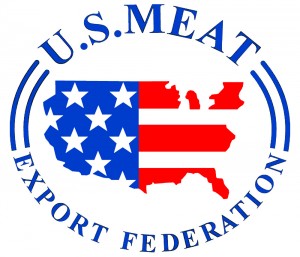Indiana growers’ sustainability story is essential to new red meat exports
Every year the U.S. Meat Export Federation (USMEF) commissions an independent study by Dave Juday of the Juday Group to quantify of the impact U.S. beef and pork exports have on corn and soybeans. The topline numbers reflect the continuing story of the importance of red meat exports to growing demand for U.S. corn and soy.
In 2023, beef and pork exports accounted for the consumption of 512.7 million bushels of corn with a value of more than $3 billion. Those exports generated about 87 cents of the per-bushel value of corn, or about 14.6 percent. The contribution to the value of U.S. DDGs was about $672 million.

The story is equally strong when it comes to pork exports and the value of soybeans. Pork exports accounted for 96.8 million bushels of soybean consumption, contributing 13.86 percent of the per-bushel value, or $1.95 per bushel. That adds up to a total economic impact for soybeans of more than $8 billion in 2023.
Drilling down to Indiana specifically, red meat exports consumed 36 million bushels of the state’s corn, adding $934 million in value to Indiana’s corn crop. Pork and beef exports in 2023 required 177,458 acres of corn production in Indiana.
Nearly 8 million bushels of Indiana soybeans were used by pork exports, adding a total value of $652 million and accounting for 127,418 acres of production.
U.S. red meat exports
But that’s just one side of the story. While U.S. beef and pork exports are key vehicles for expanding corn and soybean usage, this relationship also plays a vital role in expanding the exports of U.S. red meat.
Sustainability has become an increasingly important part of the story for consumers around the globe, and no one has a stronger sustainability story than U.S. corn and soybean growers. It’s a key component of the global marketing message for U.S. red meat that was recently highlighted by USMEF Chair Randy Spronk, a pork and grain producer from Edgerton, Minn., at Commodity Classic in Houston.
“We talk about how we differentiate our product in the international market, and I think the story that we have about how we raise our soybeans, how we raise our corn, how we process the feed, and the efficiencies – that’s a story that differentiates us from other exporting countries,” Spronk explained.
“When I graduated in 1981, 100-bushel corn was the max yield. You look at it today, it’s two-and-a-half times that. There is no greater efficiency and sustainability story than that – producing more with less. That’s a story that differentiates our product when it comes to feedgrains.”
Buyers around the world understand that quality feed is what drives high-quality protein products from the United States, and it’s the strong partnerships with growers and their organizations that enables USMEF to convey this quality and sustainability story to global consumers.
It’s a partnership that continues to pay off. Since 2015, corn consumption attributed to red meat exports has grown from 356 million bushels to 513 million bushels. Since 2018, soybean consumption attributed to red meat exports has climbed from 84.2 million bushels to 96.8 million bushels. We’re working together to move the pile.
Posted: March 23, 2024
Category: ICMC, Indiana Corn and Soybean Post - March 2024, ISA, News




